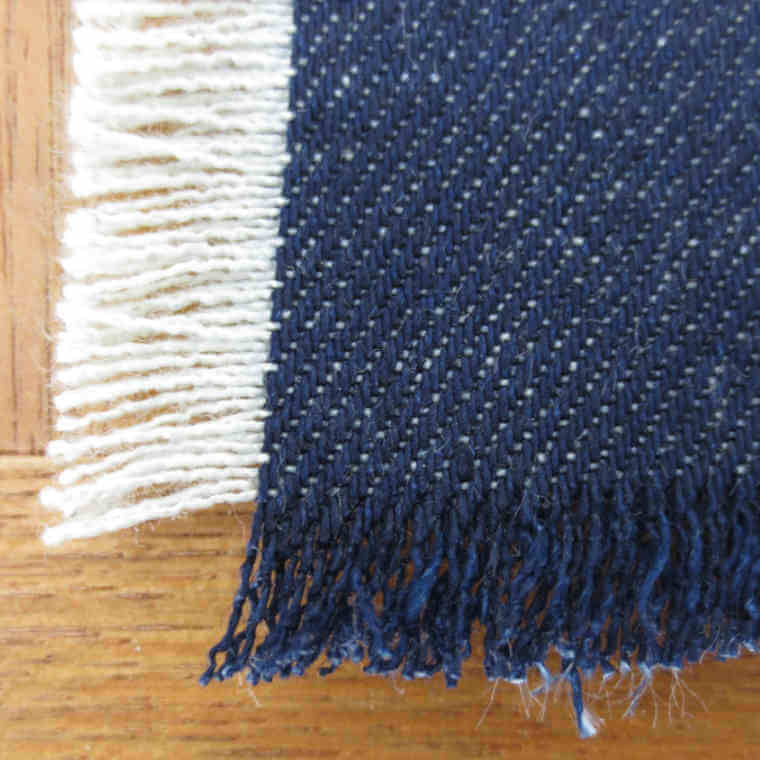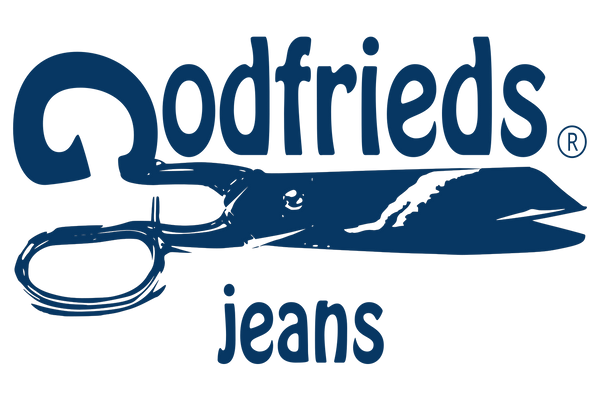
Economically sustainable eco
Share
In recent years, cotton fabrics have been in a bad light due to their allegedly excessive water consumption for cultivation. If we now change our purchasing behavior and do not buy worn-out clothing but wear Raw, our consumption will fall drastically and people will no longer be forced to grow cotton in places where irrigation is required.
In this blog you will find more details about why denim can be called a sustainable fabric.eco
I would like to demonstrate that denim, the fabric from which blue jeans are made, is an ecologically sustainable fabric. Everything that follows is the result of what the jeans pioneers put together almost 150 years ago in search of economic solutions. At that time, an economic solution could also be ecological.
As legend has it, the Americans got their fabric from Nîmes in France, a fabric called "Serge de Nîmes". This fabric weave had the advantage of being very strong and heavy, but also that you could make a colored fabric by dyeing only half of the yarns used. The warp threads (the lengthwise direction of the fabric) are dyed, the weft threads (threads in the width of the fabric) simply remain undyed in ecru.

After weaving you get a right side of the fabric that is colored and a reverse side that is almost ecru.

This Serge de Nimes, twill weave or twill, is a warp twill 3x1 where the warp threads, the blue ones, predominate on the right side of the fabric. In the photo you can see that each blue thread repeatedly goes over 3 ecru weft threads and then goes under 1 ecru weft thread.... The result is that on the right side you see 3 times more blue than on the purl side where you see 3 times more ecru.
- Advantage: half of the cotton does not need to be dyed. eco

The blue warp threads are dyed before weaving, according to the rope dyeing method, which means that the threads are immersed 8 times in an indigo dye bath, so only the outside of the threads are dyed.
- Another saving of dyes, eco,
and when worn, the ecru inside becomes visible, resulting in the specific wear aspect of blue jeans. In this photo you can see the blue warp threads in cross section and you can clearly see the ecru core of the threads.

As mentioned, the threads in strands (ropes) are successively immersed in an indigo dye bath after which they are given time to oxidize after which they are returned to the next bath, usually 8 baths. These are large installations, but they usually have the advantage that only blue is painted and that there are therefore no color changes where everything has to be rinsed and cleaned, unlike fast fashion where colors and designs have to be switched in small quantities. It goes without saying that this cleaning and rinsing results in a lot of energy, products and water wastage.
Godfrieds only uses Selfedge denim woven according to the original method of weaving with shuttle looms.
This has the advantage that the edge of the fabric called the selvedge (Selfedge, Selvage) is bonded and does not unravel.
In the photo on the left side of the fabric. This selvedge, which is woven by the weaving mills in a color other than blue, red and/or ecru, is used in our garments and can be seen especially in the side seams of our jeans.

These seams therefore do not require any additional operations to prevent unraveling and ensure that the fabric is used all the way to the edge.
Approximately 60 meters less stitching thread (per trouser) is needed to avoid finishing the side seams, and a fabric gain of +/- 0.1 m² of fabric (per trouser) along the fabric edges that would otherwise be thrown away.
- By using Selfedge we save raw materials.eco

We supply our trousers Raw unwashed, so they have not been industrially worn mechanically, chemically or with lasers.
So customers have to wear out their jeans themselves, so you get cotton that has served its purpose and has been used, not a disposable item.
- By wearing Raw, no unnecessary machines, energy and raw materials are lost. eco
The less the customer washes his pants, the better the wear, in the photo a new raw jeans with above it a pair of jeans worn for 365 days that were washed 4 times.

Conclusion, raw Godfrieds jeans are a sustainable product.eco
Without mentioning that they are stitched in Belgium and consist of 100% vegetable raw materials, with or without customization for an acceptable price.
Note: To make the story readable, statements or figures have been mentioned that may differ due to the application of different ways of working or constructions.
